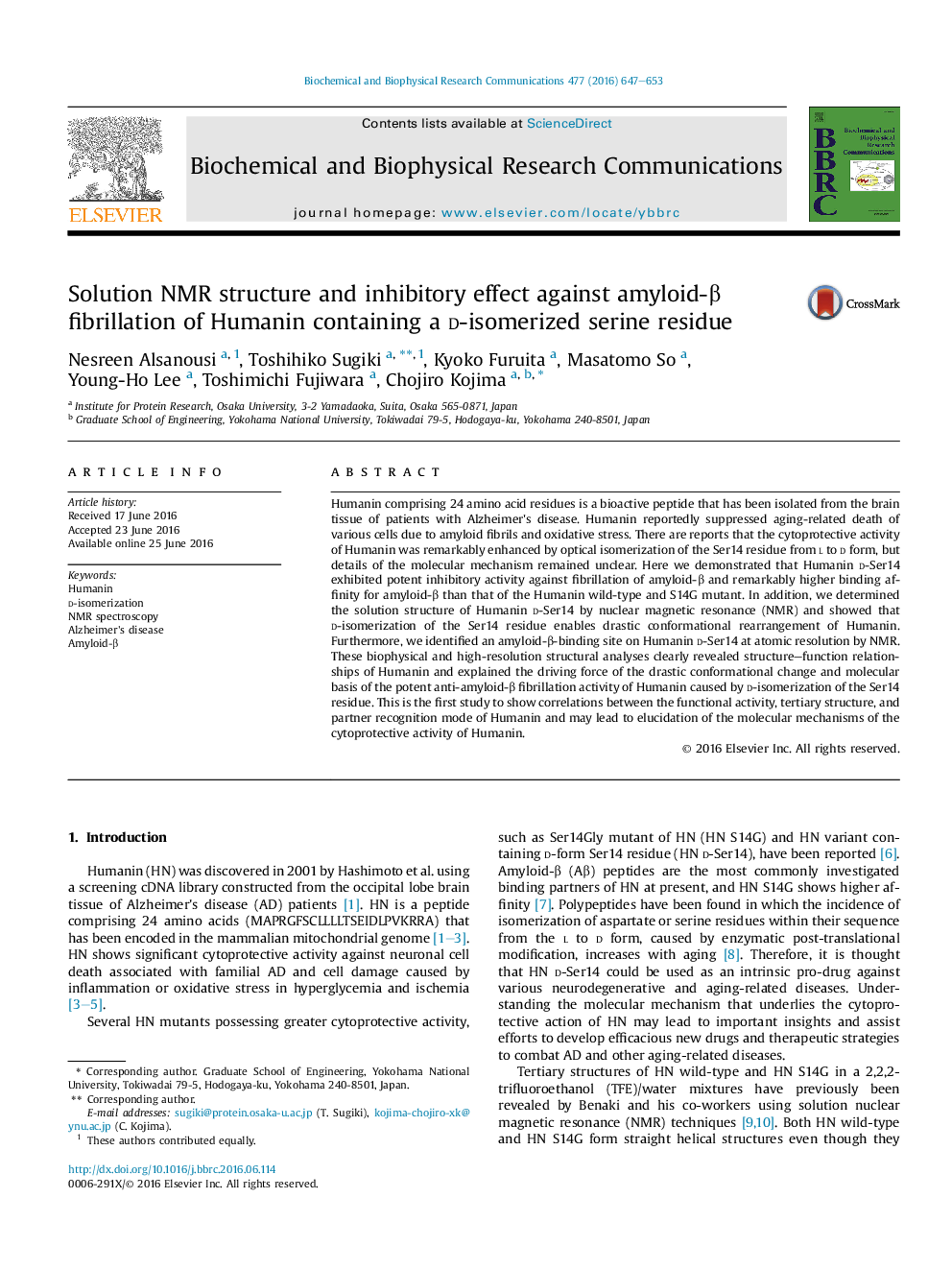| Article ID | Journal | Published Year | Pages | File Type |
|---|---|---|---|---|
| 10747935 | Biochemical and Biophysical Research Communications | 2016 | 7 Pages |
Abstract
Humanin comprising 24 amino acid residues is a bioactive peptide that has been isolated from the brain tissue of patients with Alzheimer's disease. Humanin reportedly suppressed aging-related death of various cells due to amyloid fibrils and oxidative stress. There are reports that the cytoprotective activity of Humanin was remarkably enhanced by optical isomerization of the Ser14 residue from l to d form, but details of the molecular mechanism remained unclear. Here we demonstrated that Humanin d-Ser14 exhibited potent inhibitory activity against fibrillation of amyloid-β and remarkably higher binding affinity for amyloid-β than that of the Humanin wild-type and S14G mutant. In addition, we determined the solution structure of Humanin d-Ser14 by nuclear magnetic resonance (NMR) and showed that d-isomerization of the Ser14 residue enables drastic conformational rearrangement of Humanin. Furthermore, we identified an amyloid-β-binding site on Humanin d-Ser14 at atomic resolution by NMR. These biophysical and high-resolution structural analyses clearly revealed structure-function relationships of Humanin and explained the driving force of the drastic conformational change and molecular basis of the potent anti-amyloid-β fibrillation activity of Humanin caused by d-isomerization of the Ser14 residue. This is the first study to show correlations between the functional activity, tertiary structure, and partner recognition mode of Humanin and may lead to elucidation of the molecular mechanisms of the cytoprotective activity of Humanin.
Related Topics
Life Sciences
Biochemistry, Genetics and Molecular Biology
Biochemistry
Authors
Nesreen Alsanousi, Toshihiko Sugiki, Kyoko Furuita, Masatomo So, Young-Ho Lee, Toshimichi Fujiwara, Chojiro Kojima,
